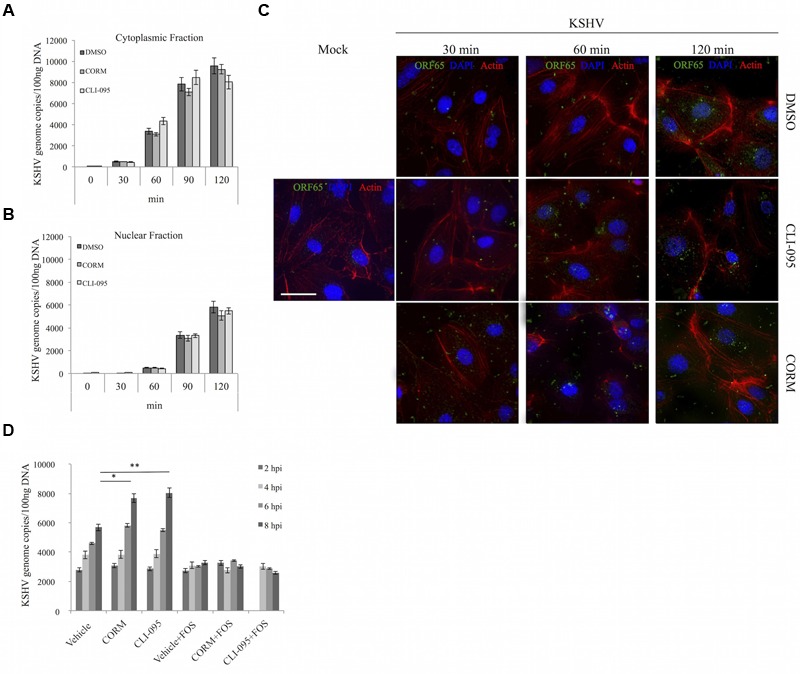FIGURE 4.

TLR4 inhibition via CO or CLI-095 does not affect virus binding, entry or genome delivery to the nucleus. qPCR for KSHV genome copies in (A) the cytoplasmic fraction and (B) the nuclear fraction of iLEC pretreated with 3 μM CLI-095 (pale gray) for 2 h or 10 μM CORM-2 (light gray) for 10 min and then infected with KSHV-BAC16. DMSO (dark gray) was used as a vehicle control. KSHV genome copies are represented as number of genomes per 100 ng DNA. Data are expressed as the mean ± SEM (n = 3). (C) Immunofluorescent analysis of iLEC infected with KSHV-BAC16 for 30, 60, or 120 min. Expression of ORF65 (green), Actin (red), and DAPI (blue) are shown. Single left panel: Uninfected cells (mock). Top three panels: DMSO-treated iLEC. Middle three panels: CLI-095 treated iLEC. Bottom three panels: CORM-2-treated iLEC. Images were captured at 60× magnification (scale bar = 30 μm). (D) qPCR for KSHV genome copies in iLEC pretreated with 3 μM CLI-095 for 2 h or 10 μM CORM-2 for 10 min and then infected with KSHV-BAC16 for up to 8 h in the presence or absence of 400 μM Foscarnet (+FOS). DMSO was used as a vehicle control. KSHV genome copies (2–8 hpi) are represented as number of genomes per 100 ng DNA. Data are expressed as the mean ± SEM (n = 3). A one-way ANOVA test was used for statistical analysis. ∗p-value ≤ 0.05, ∗∗p-value ≤ 0.01.
